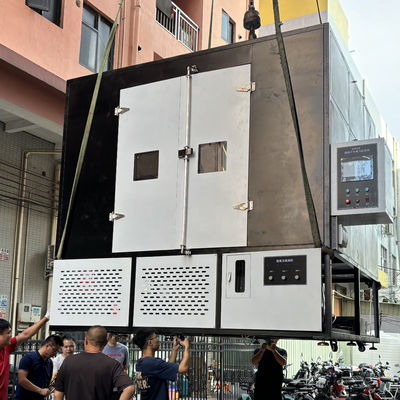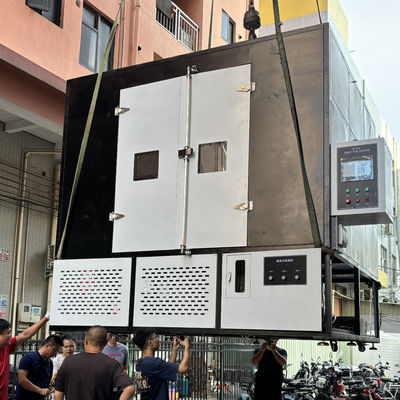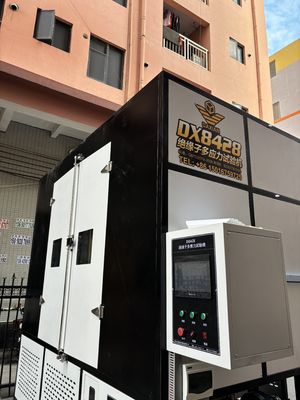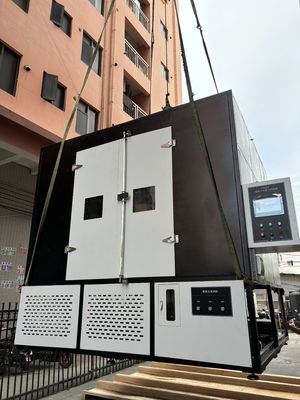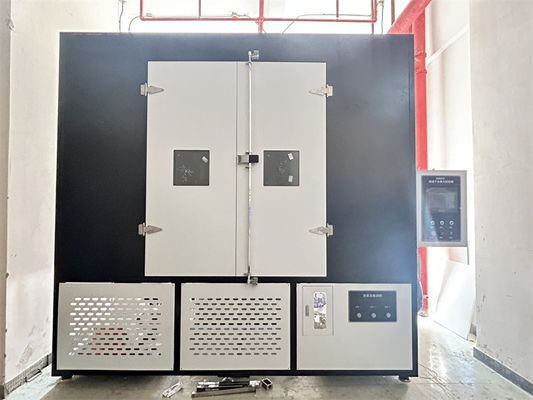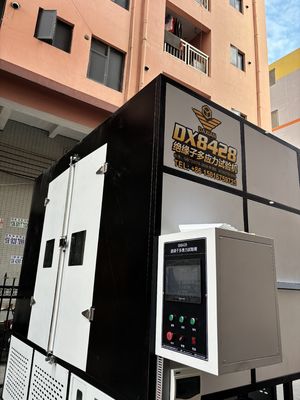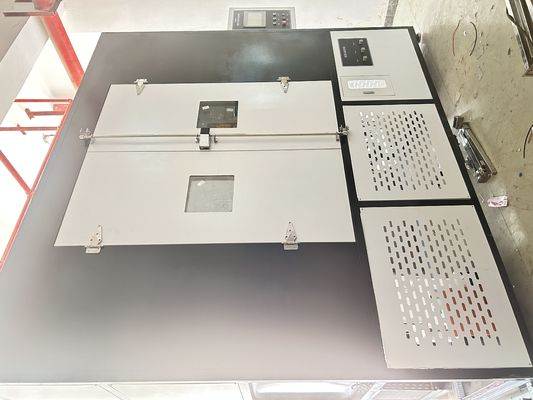Product name:
Technical Specifications for the 5000 - hour Multiple Stress Test Setup in accordance with IEC 62730:2024.
Scope of application:
The equipment is mainly used to simulate the
comprehensive performance test of insulators under complex working conditions, and evaluate their durability and reliability by applying multi-stress coupling effects such as mechanical load, high voltage, temperature and humidity changes, and chemical corrosion. Includes:
1.Power field: anti-aging, anti-pollution flashover test of insulators for high-voltage transmission lines and substation equipment.
2.Rail transit: Performance evaluation of insulated components of electrified railway catenary in vibration, arc and wet environments.
3.New energy scenario: Long-term reliability verification of photovoltaic/wind power outdoor insulation equipment under UV, salt
spray and humid heat cycle.
4.Industrial environment: Chemical corrosion resistance and low pressure resistance test of insulators in chemical plants and coastal facilities.
The test types cover mechanical-electrical coupling (such as vibration + partial discharge), environment-electrical synthesis (such as salt spray + electric field distortion) and multi-factor accelerated aging (temperature shock + chemical corrosion), which comply with IEC and GB standards and provide data support for R&D improvement, quality inspection and operation and maintenance strategies.
Test Procedur :
1- The test cabin interior coating will be made of corrosion-resistant stainless steel (306 or 315). Coating can be applied against salt fog and corrosion.
2- The corrosion-resistant material will be made of a single piece as much as possible on each wall that will not be attached.
3- The cabin interior dimensions will be 2.7x3.0x2.4m (Total volume 18.63m3)
4- There will be a window equipped with radiation-blocking glass on the door.
5- The distance between the test samples and the xenon lamp will be 1m
6- The wall thickness will be min. 10cm and the inside will be covered with heat insulation material
Compliant with standards:
In this document, the technical requirements of the 5000h multiple stress test bench are given according to IEC 62730:2024.
Test Conditions:
1.The cycle of stresses applied to the insulators and repeated for a period of 5 000 h is shown in Figure 3. The cycle is designed so that the test specimens are also subjected to the effects of temperature variation and condensation .
2.The test specimens are arranged vert ically in the chamber as shown in Figure 4. There shall
be a clearance of at least 400 mm between adjacent edges of the sheds of test specimens and between the test specimens and the roof, the walls and the floor.
3.The test specimens shall be cleaned with de-ionised water before starting the test. Up to three pairs of test specimens with comparable creepage distance can be tested simultaneously.
4.Weekly interruptions of the test for inspection purposes, each of these not exceeding 1 h are permissible . lnterruption periods shall not be counted in the test duration . Five longer interruptions up to 60 h each are allowed. An additional testing time of three times the duration of the interruption period shall be added. The final test report shall include all details of interruptions.
Artificial Rain:
The artificial rain shall be provided by nozzles mounted above the test specimens and outside their perimeter (see Figure 4 ). The
average precipitation rate shall be in accordance with IEC 60060-1 . Water of a minimum resistivity of 85 nm shall be used. Each
of the test specimens is sprayed individually.
Salt Solution Tank Control System:
1-ton capacity, 304 stainless steel tank.
2.Double-layered and insulated with an openable lid and mixing arms.
3.Heated with a resistive element, with a screw-fed salt addition system.
4.Includes a locking brake chassis and overflow discharge system.
5.Water Washing Tank Control System:
6.Similar specifications as the salt solution tank, with a 1-ton 304 stainless steeldesign and heating capabilities.
Salt fog calibration:
The calibration will be carried out before the start of the test.
At least two clean collecting receptacles with a collecting area of 8 000 mm2 ± 2 000 mm2 and a maximum height of 100 mm each are placed as close as practical to the position of the ends of the test object. The receptacles are positioned in such a way that they are not shielded by the test specimens and to avoid dripping from the construction elements of the chamber or another source.
They should collect between 1,5 ml and 2,0 ml of precipitation per hour (corrected to 8000 mm2 collecting area) averaged over a minimum period of 16 h.
NOTE The flow rate necessary to obtain such precipita tion (typically of the order of 0,3 l/m3h based on a chamber not larger than(15 m3) should be noted. (The water flow rate is defined in l itres per hou r and per cubic meler of the test chambe r volume. )
Subsequently du ri ng the test, the flow rate should be checked at least every 100 h and should remain within ± 25 % of the initial value.
it is not permitted to re-circulate the water.
General conditions:
1- Training will be provided on the maintenance and use of the device
2- After the installation is completed, the device will operate without any problems for 1 month (4 weeks) for acceptance.
3- Electrical diagram and water pipe connection system diagrams will be provided
4- Maintenance manual will be provided
5- User manual will be provided
6- Parts in contact with salt fog and rain will be stainless
7- Electrical components will be suitable for 380V infrastructure
8- Warranty conditions will be specified
9- Spare parts will be provided for 10 years
10- Consumables list will be provided
Core advantages of insulators:
1.Excellent insulation performance
Insulators can effectively isolate high voltage by increasing the creepage distance, prevent current leakage and arc flashover, and ensure the safe operation of the power system. For example, composite insulators are made of materials such as silicone rubber, which have excellent resistance to pollution flashover and can maintain stability in heavily polluted environments. 2.High mechanical strength and durability Modern insulators, such as the fourth generation epoxy resin composite insulators, have higher mechanical reliability and can withstand extreme mechanical loads (such as wind vibration, icing) and temperature changes, reducing failures caused by material degradation.
Future Development Trends of Insulators: 1.Material Innovation and Performance Upgrade The fourth generation hard composite insulator: using epoxy resin based materials, it solves the problems of interface sealing failure and self explosion of the previous three generations of products, and has high mechanical strength and pollution flashover resistance. It has entered the commercial pre production stage 710. Nanocomposite materials: By adding nanoparticles to enhance the aging resistance and UV resistance of materials, they can adapt to new demands such as high-frequency harmonics in smart grids. 2.Expansion of application areas High voltage and ultra-high voltage transmission: With the upgrading of the global power grid, the demand for insulators with voltage levels of 750kV and above has surged, especially in transmission projects in extreme areas such as deserts and high cold regions. New energy and rail transit: The demand for lightweight and high reliability insulators in wind power, photovoltaic power plants, and high-speed rail contact networks is driving market growth.

 Your message must be between 20-3,000 characters!
Your message must be between 20-3,000 characters! Please check your E-mail!
Please check your E-mail!  Your message must be between 20-3,000 characters!
Your message must be between 20-3,000 characters! Please check your E-mail!
Please check your E-mail! 


